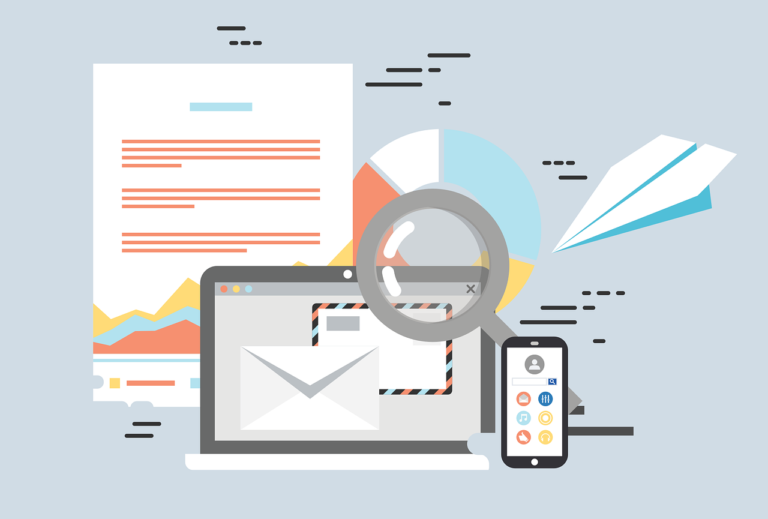Marketing automation may still be in it’s infancy, but it has already garnered a reputation for being a cold, calculated tool in the hands of marketers. We set it up and voila, mindless blanket notifications are sent based on activities that are done via our website or other correspondence. Digital marketer Gary Vaynerchuk once said, “marketers ruin everything”. And in a sense he’s right. We need to be thoughtful about our approach to every audience interaction.
In the days leading up to digital sales and marketing, the term improvisation (or improv), often took the role of the savvy salesperson who was able to think quickly on their feet in a sales presentation, or the marketer who was able to think outside the box. Improv has many attributes, but can automation be one of them?
The Art of Improv
The value that improv provides is the element of surprise and delight. But this value isn’t based on random or arbitrary activity. It’s based on a few core elements that are second nature to the people who are able to deliver it.
- Listening for relevance:
One of the key elements of improv in a comedy context is that one person needs to listen and truly understand where the other person is leading the dialogue. This is why marketing automation should never be a solo proposition. To be truly effective in improv, you must listen to other actors and determine their role and how you will interact with them. To create moments of improvisation you must first listen. - Know Your Audience:
In any field where communication is relied upon to provide value, listening and understanding who you’re speaking to are key. Have they experienced what you’ve experienced? Whether it’s a group of realtors or bodybuilders, what each group finds humorous will be unique. The connections we make with them must reflect our knowledge of who they are. - Follow the flow:
When you’re doing improv, it’s necessary that your story have a rhythm or a cadence. It’s in this flow of story that an audience will find connection. If you’ve ever been to an evening of improv, you’ll notice that there is a broader story being told. The flow of a story will ultimately engage you in meaningful ways. Breaking this pattern or flow will leave audiences feeling disconnected. - Delight with a payoff:
There are many times throughout an improvisational skit or comedy routine where there’s a moment of delight or a comedic payoff. It often leaves the audience even more engaged and connected to the story being told. This is one of the most important elements of improv. It’s the response that our amygdala reacts to. It’s the part of your brain that helps evaluate if something is memorable and full of delight.
Improv is part art and part science. It’s not something that can simply be calculated or easily produced. It comes with practice and a keen awareness of these elements. Now let’s take a look at each of these elements in the light of how we automate our marketing and communications.
Automating Improv
Automation continues to be seen as a calculated prescription of actions that are a result of someone’s choice. These seem in complete contrast to the ebb and flow of a improv comedy routine. Or are they? Let’s consider the factors of improv that we’ve highlighted and determine if there is a place in our marketing automation for them.
- Listening for relevance:
One of the things that we often miss when developing our automation workflows is a close relationship with the other functions of our business that provide us with real-time feedback. Integrations become a key way for businesses to assess relevance throughout the entire product lifecycle. Are you working with other teams in your business? If you’re able to check for whether an email has been opened or a link has been clicked, what other actions/activities can provide feedback? Payment received? Order processed? Shipment delivered? Consider what notifications can be leveraged to help you make the most meaningful connection. - Know Your Audience:
This seems fairly intuitive. When someone clicks on a link, visits a page or fills out a form, it begins to indicate intent or motivation. Your audience is providing you with all manner of information that will help you learn more about them. Knowing this information gives you information with which to validate interest. Are you leveraging each marketing channel and function in your business to truly understand them? - Follow the Flow:
Consider flow akin to your buying journey. One of the real challenges of improv is the ability to combine all of these factors into a relevant story. The same is true of marketing automation. Follow your visitor/customer as they make decisions. As you do, be sure to provide value at each milestone. Allow their decisions and your value to steer them into opportunities for delight. - Delight with a Payoff:
We all know that with improv the payoff is the punchline or the big finish. As we consider marketing’s role in engaging our audience and maximizing resources with automation, we must use these tools to engage our audience, not simply move them through a funnel. Whether you are listening for keywords, monitoring for clicks, be intentional by identifying specific segments or customers to provide truly delight filled moments.
Many organizations are joining the marketing automation movement. They’re taking their simple, routine communications and moving them into an automation system. This is not altogether a bad thing. But the opportunity cost may be greater than anticipated if marketing teams don’t find improvisational ways to make automation a value added part of their marketing strategy. Here’s our chance to take the stage and make each interaction one they won’t soon forget.



